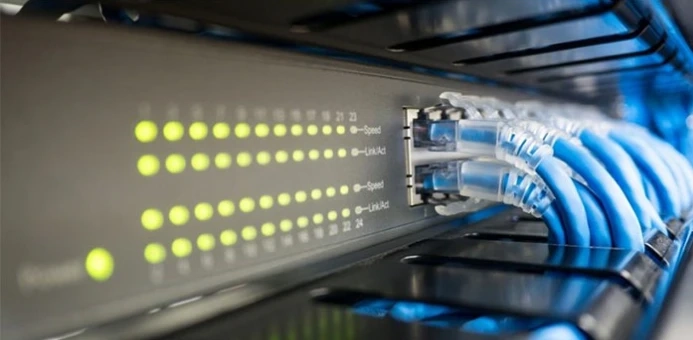So when a data packet is sent to a switch, it’s only directed to the intended destination port, unlike a hub where a hub will just rebroadcast the data to every port. So as a result switches are far more preferred over hubs because they reduce any unnecessary traffic on the network. So as a review, a hub only detects that a device is physically connected to it. And a switch can detect specific devices that are connected to it because it keeps a record of the MAC addresses of those devices. Basically switches were not supposed to read IP addresses. They operate at the data link layer (layer 2) of the OSI model to create a separate collision domain for each switch port. However, these days most switches support basic IP routings. These type of switches are called layer 3 switches meaning that they can support routing protocols and provide layer 3 connectivity.
Most Cisco switches will ship with basic switch functionality like Ethernet switching and for more advances features such as routing functionalities, NAT and etc., customers need to purchase Cisco switch licenses.
Cisco Switch Benefits
Cisco offers a choice of traditional, cloud managed, or full fabric-control mode providing numerous range of features, scales, port speeds, and interface types from Fast Ethernet (10/100 Mbps), Gigabit Ethernet, Ten Gigabit, and even 40/100Gbps (gigabits per second) speeds.
PoE enabled Cisco switches lets you power a device such as an IP phone, surveillance camera, or wireless access point over the cable that is used for data traffic. This allows you to place endpoints anywhere, even in those areas that are usually difficult to reach. Moreover, these switches enable easy-to-deploy fixed and modular, core, distribution, and LAN access switches have been designed for the era of intent-based networking. They also help your network continuously learn and evolve to meet business needs.
Furthermore, seamlessly integrate with full-stack programmability, from ASIC to the OS, helping you to add future features without upgrading hardware.
Finally, Cisco switch smart licenses, makes it more convenient to monitor, manage and transport various Cisco switch licenses between different devices and locations.
0


